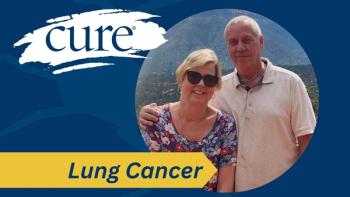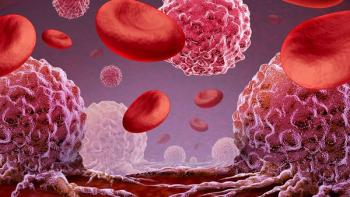
Knowledge, Kindness and Patience: Family Dynamics in Cancer Care
Patients and caregivers benefit from informed and sensitive decisions about treatment options. How do you provide the best possible care while successfully balancing personalities and emotions?
Cancer! One hears the diagnosis. One reacts. Fear, sorrow, tears--perhaps even despair--exist alongside acceptance of the reality and a determination to fight back. Family and friends rally around. Everyone has an opinion. Everyone has advice. Everyone is well-intentioned, but not everyone agrees on what to do. How do you provide the best possible care while successfully balancing personalities and emotions? And how do you do this when the disease is terminal?
You succeed by always putting the patient first, a goal that can be elusive. Family members and caregivers often argue, albeit sincerely, over treatment options and end-of-life issues. We all need to remember that the patient’s needs and choices take precedence over personal beliefs, the need to be right, personality differences and conflicting opinions. Even with the best of intentions, the emotional stress and the trauma of watching a loved one suffer, particularly if the disease is terminal, often overrides logic.
When my mother was diagnosed with squamous cell cancer of the face in 1996, which was her second and final bout with oral cancer, my family never developed a cohesive approach to her care. In a desperate effort to find a new treatment option that might save her, we were referred to specialists at different hospitals. No one helped us coordinate the assessments. Each doctor’s visit was a separate experience, with its own diagnosis and recommendation for treatment. Confusion resulted. Doctors had more than one contact person, different doctors provided slightly different information on different days, details were repeated or heard inaccurately in phone conversations among family members, and the appropriate course of action was under constant debate. Everyone seemed to forget that the final treatment decision belonged to my mother—and only to her.
Hindsight does teach many lessons. In retrospect, my family could have better strategized how to approach my mother’s care and provide support for each other. Since then, cancer treatment centers have developed more unified and sensitive approaches to treatment. Advances in diagnostic techniques and reconstructive surgery have allowed for earlier treatment and more successful outcomes. Providing the best care has become a competitive business. The disease no longer carries the stigma of guilt and embarrassment. Patients and caregivers have access to many resources to learn about treatment options and outcomes, including the Websites of professional organizations and support groups and a myriad of informative publications.
What could we have done differently? What would I recommend?
1. Put appropriate documentation in place before illness occurs, including a medical proxy, a living will and a financial power of attorney, so that these decisions are made under less stressful circumstances and can be reviewed and updated with family members and primary care physicians every few years.
2. Select a primary care physician with whom you are comfortable. One who returns calls, answers questions, is affiliated with a research hospital, has a positive rating and can make recommendations to respected specialists.
3. Choose a person to accompany the patient to medical appointments, so that information and instructions are heard by more than one person. If appropriate, that person can then update other family members and caregivers on developments and decisions.
4. Meet in advance of treatment with surgeons, oncologists, therapists, nutritionists and other members of the medical team. Perhaps speak with other patients and their families. Become knowledgeable about treatment options, the side effects of each, and what residual problems the patient will confront after treatment in performing the activities of daily living. The websites of professional societies and support groups can be a valuable resource for patient education, as can a myriad of reliable publications.
5. The medical team should have a coordinator, to whom the family can refer questions and discuss concerns. My mother had seven doctors on her final battle with cancer, but each one contacted us separately—and each spoke to the family member with whom he or she felt most comfortable.
6. Remember the children who are affected. I was 15 when my mother was first diagnosed in 1963. In an era that was less attuned to the needs of young people, I was left out of discussions and found myself alone and unprepared for the physical changes in my mother’s appearance, the difficulties she faced in just eating, sleeping, and talking and the fact that recovery did not translate into a return to what I knew as normal living. My own responsibilities in helping care for her were never explained; they just evolved as we lived through the realities of each day.
7. Be tolerant and patient with others. Everyone is under great stress. Some people will be stronger than others, and all will have bad moments and depressing days. Respect these highs and lows in others and be supportive of the needs of all family members. Be kind to each other. Conflict is a waste of valuable energy.
8. Once the patient reaches an informed decision or the situation requires that the living will be invoked, respect and accept it, be supportive, and minimize disagreements based on personal choices and beliefs.
The patient—and loved ones--benefit when the approach to treatment is based on accurate information presented and discussed in organized, coordinated, informed, supportive and sensitive surroundings. Particularly when cancer is terminal, family members need to know that they did everything possible while respecting the preferences of the patient—they fought the good fight, even if, in the end, the fight was lost. If the family argues and divides, the patient suffers even more and the grief is all the greater.





